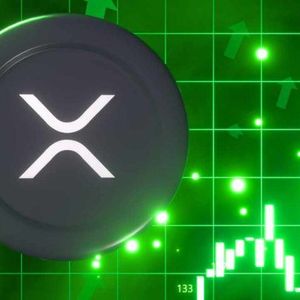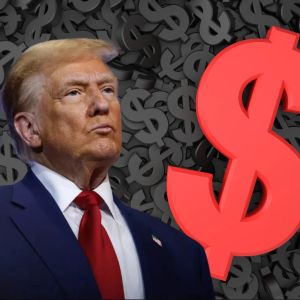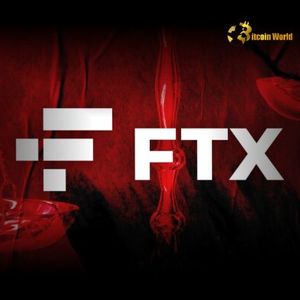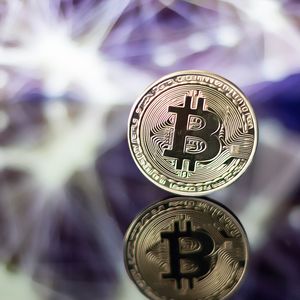BitcoinWorld Historic: Thai SEC Launches Rules for Government Bond Token ‘G-Token’ Big news from Thailand! The country’s Securities and Exchange Commission (SEC) has taken a significant step into the world of Digital Assets by announcing specific rules for its planned ‘G-Token’. This initiative marks a notable move by a government to leverage blockchain technology for public finance. What is the Thai SEC’s G-Token Initiative? The Thai SEC has laid down the regulatory framework for the ‘G-Token’. This isn’t just another cryptocurrency; it’s specifically designed as a tokenized government bond. The primary goal behind issuing the G-Token is to help the government raise funds to address its budget deficit. This approach allows the government to tap into new pools of investors, potentially making it easier and more efficient to secure necessary financing compared to traditional methods alone. Announced on May 13th, the G-Token represents a digital representation of a real-world asset (RWA) – in this case, a government bond. The plan is ambitious, aiming to issue approximately $150 million worth of these tokens. The issuance is slated for July 25th and will be conducted via an Initial Coin Offering (ICO) portal, a platform commonly used in the digital asset space. The Ministry of Finance will play a crucial role, acting as the registrar for the token issuance. Understanding the Government Bond Token A Government Bond Token is essentially a digital security that represents ownership in a government bond. In the traditional financial world, bonds are debt instruments issued by governments to raise capital. Investors who buy bonds are lending money to the government and receive periodic interest payments, with the principal repaid on a specific maturity date. Tokenizing these bonds means creating a digital version on a blockchain or similar distributed ledger technology. The key distinction highlighted by the Thai SEC is the G-Token’s specific use case. While it is a Digital Asset , it is not intended for use as a payment method, nor is it designed to be traded on secondary markets like typical cryptocurrencies (e.g., Bitcoin or Ethereum). This restriction sets it apart from speculative digital currencies and firmly places it in the realm of regulated financial instruments, albeit in a tokenized form. Details regarding the specifics of the G-Token, such as interest rates, the exact maturity date, and any collateral backing the bond, are expected to be released closer to the July 25th launch date. These details will be critical for potential investors to evaluate the token’s investment potential. Why Tokenize Government Bonds? Exploring the RWA Concept The G-Token is a prime example of a Tokenized Real-World Asset ( RWA ). RWAs in the digital asset space refer to the process of bringing tangible or traditional financial assets onto the blockchain. This can include anything from real estate and art to commodities and, as in this case, government bonds. Tokenization involves creating a digital token that represents fractional or full ownership of the underlying asset. Why is this trend gaining traction? Tokenizing RWAs offers several potential advantages: Increased Liquidity: While the Thai G-Token currently has trading restrictions, tokenization generally has the potential to make traditionally illiquid assets more accessible and easier to trade by breaking them into smaller, digital units. Fractional Ownership: Allows investors to own a portion of a high-value asset that might otherwise be unaffordable. For government bonds, this could potentially lower the minimum investment threshold. Greater Transparency: Transactions recorded on a blockchain are immutable and publicly verifiable (depending on the blockchain type), which can increase trust and reduce fraud. Efficiency: Automation through smart contracts can streamline processes like interest payments and principal repayment, potentially reducing administrative costs. Accessibility: Can open up investment opportunities to a wider range of investors, including those who might not have easy access to traditional bond markets. For the Thai government, tokenizing bonds specifically addresses the need to raise funds efficiently and potentially attract a broader base of investors, including those familiar with or interested in digital asset platforms. How Does the Thai SEC’s Approach Differ? The regulatory approach taken by the Thai SEC for the G-Token is distinct. By explicitly stating that the token cannot be used for payments or traded like typical cryptocurrencies, the SEC is drawing a clear line between this regulated financial instrument and the more volatile, often unregulated, crypto market. This focus on the token as a bond first and a digital asset second is a key characteristic of this initiative. This regulatory clarity aims to protect investors by ensuring the token functions within a known financial framework, rather than being subject to the speculative pressures and regulatory uncertainties often associated with general-purpose cryptocurrencies. It signals a cautious but forward-thinking approach to integrating blockchain technology into public finance, prioritizing stability and investor protection. The requirement for issuance through an ICO portal suggests a level of oversight and process similar to how other regulated digital securities might be offered, ensuring compliance with existing securities laws while utilizing new technology. Potential Benefits and Challenges Issuing a Government Bond Token like the G-Token comes with potential benefits and challenges. Potential Benefits: Efficient Fundraising: Streamlined issuance process through a digital platform. Broader Investor Base: Potential to attract tech-savvy investors or those seeking alternative ways to invest in government debt. Reduced Costs: Automation of processes like coupon payments could lower administrative overheads. Innovation Showcase: Positions Thailand as a leader in exploring the use of blockchain for public finance. Potential Challenges: Investor Education: Ensuring potential investors understand the nature of a tokenized bond versus a typical cryptocurrency. Technical Implementation: Ensuring the ICO portal and underlying technology are secure and robust. Regulatory Compliance: Navigating the complexities of issuing a security in a tokenized format under existing laws. Market Acceptance: Gauging demand for a tokenized bond with restricted tradability. Security Risks: Protecting against cyber threats and hacks common in the digital asset space. The success of the G-Token will likely depend on how effectively these challenges are managed and how clearly the benefits are communicated to the public and potential investors. What’s Next for Thailand’s Digital Asset Landscape? The G-Token initiative is a significant development in Thailand’s evolving Digital Assets landscape. It signals a willingness by the government and regulators to explore the potential of blockchain technology beyond just cryptocurrencies, focusing on its application in traditional finance and public administration. This move could pave the way for future tokenization efforts involving other types of assets or government-related financial instruments. It also highlights the importance of regulatory clarity in fostering innovation while maintaining market integrity and investor confidence. The Thai SEC ‘s approach provides a potential model for other jurisdictions considering similar initiatives. As the July 25th launch date approaches, market participants and the public will be watching closely for the release of more specific details on the G-Token’s terms. The success of this initial issuance could significantly influence the future trajectory of RWA tokenization and the broader adoption of blockchain technology within Thailand’s financial ecosystem. Conclusion: A Step Towards Tokenized Public Finance The Thai SEC ‘s announcement of rules for the G-Token marks a pioneering effort in the realm of tokenized government bonds. By creating a regulated Digital Asset designed specifically for fundraising rather than speculation or payments, Thailand is exploring an innovative path to finance its budget deficit using blockchain technology. This initiative underscores the growing importance of RWA tokenization and provides a valuable case study for how governments can cautiously but effectively engage with the digital asset space for public benefit. The success of the G-Token could set a precedent for future tokenized financial instruments issued by governments worldwide. To learn more about the latest digital asset trends, explore our article on key developments shaping RWA tokenization institutional adoption . This post Historic: Thai SEC Launches Rules for Government Bond Token ‘G-Token’ first appeared on BitcoinWorld and is written by Editorial Team



















